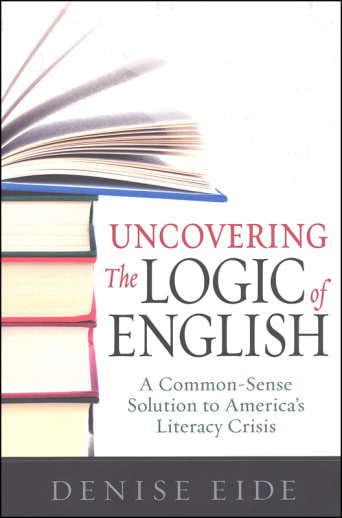Denise Eide passionately believes that mastery of English (literacy) could be greatly simplified by:
Understanding that there is a method behind the madness; English is systematic (at least 98% of the time)
Learning and embracing the rules of this system
And here I thought this was common knowledge. Now I understand why Spelling is one of our largest-selling areas. I was not aware that, according to the National Report Card, 34% of fourth graders cannot read and 68% are below proficient. Apparently, this has gone on for some time since 48% of all adults are also not proficient readers, according to the same report. The author also bemoans the fact that "intensive phonics is saved almost exclusively for students who struggle". Written in 2011, this book is not an outdated tome from the sight-reading era. Apparently, this is the current state of affairs in the country at large. The author firmly believes that the cause of the problem is that the structure, the logic, of English is not understood or taught. This not only hinders reading, writing, and spelling skills, but results in discouraged children who become illiterate adults. In writing this book, the author hoped to demystify the English system for parents and teachers, helping them turn the situation around in our nation. I think she has succeeded in this volume. Her presentation is comprehensive, clear, and well-organized. Helpful charts and tables punctate the concise text, lending additional structure and simplification to the narrative. A list of tables in the front helps you find specific information quickly. The book concludes with appendices that sum up most of the material in lists or charts providing a handy, ongoing reference.
While I hope most homeschoolers have used or are using an intensive phonics program, this book would be an excellent refresher and reference. If you are one of the many homeschoolers whose children were taught to read in the public school system, you need to get this book and read it. Then you need to teach the rules of the English system to your children. If your children are past the phonics stage, but still having trouble with reading or spelling, this book will help you back up, understand the system, and get your children back on track. And, if you are just starting to teach your children to read, you will want to read this book first. Then, for more direct teaching materials, see the Logic of English program from Pedia Learning, inspired by this volume.

